Menus
- California 1400 meets 850 T3 from 1976
- 266 kilos versus 345 kilos
- Moto Guzzi California 1400 can do 185 things
- More feeling, less mass is the motto of the T3
- Conclusion
- Technical specifications
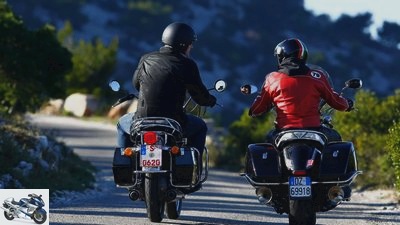
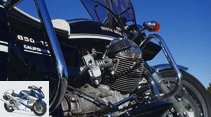
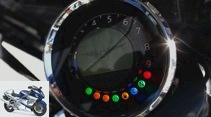
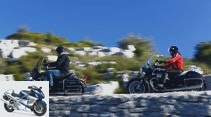
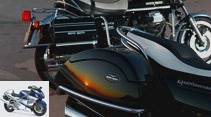
39 photos
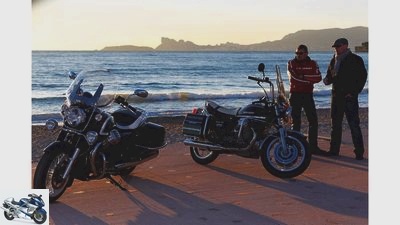
1/39
Generation meeting at Guzzis. The Moto Guzzi California 1400 from 2013 in comparison with its ancestor, the 850 T3 from 1976.

2/39
Moto Guzzi 850 T3: The V2 has a venerable patina. Also in the form of the Dellorto 30 carburettor.

3/39
Moto Guzzi California 1400: flood of information in the displays and the on-board computer, only the “revolving” rev counter of the 1400s shows, as usual, analogue.
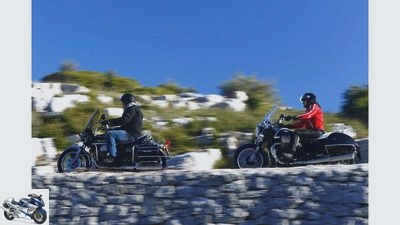
4/39
Moto Guzzi 850 T3 from 1976 and California 1400 from 2013.
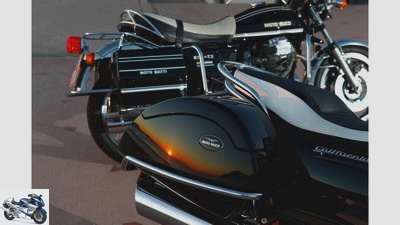
5/39
Moto Guzzi 850 T3 from 1976 and California 1400 from 2013.

6/39
Moto Guzzi 850 T3: Veglia watches with inaccurate display and fuzzy indicator lights.

7/39
Moto Guzzi California 1400: The largest V2 in Guzzi’s factory history is crowned by four valves and sophisticated slots in the cylinder covers.
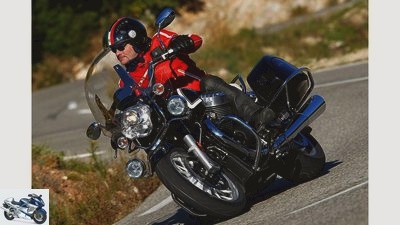
8/39
Moto Guzzi 850 T3 from 1976 and California 1400 from 2013.
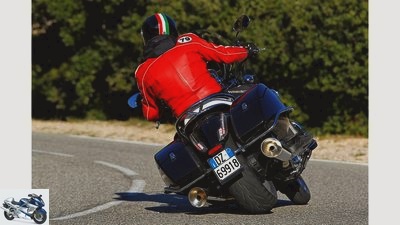
9/39
Moto Guzzi 850 T3 from 1976 and California 1400 from 2013.
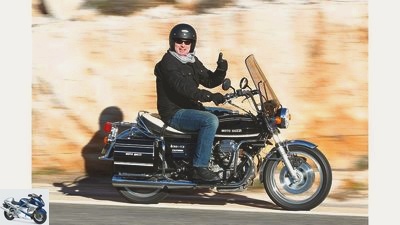
10/39
Moto Guzzi 850 T3 from 1976 and California 1400 from 2013.

11/39
Moto Guzzi 850 T3 from 1976 and California 1400 from 2013.
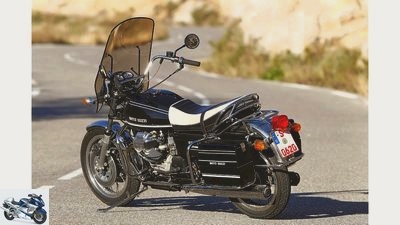
12/39
Moto Guzzi 850 T3 from 1976 and California 1400 from 2013.
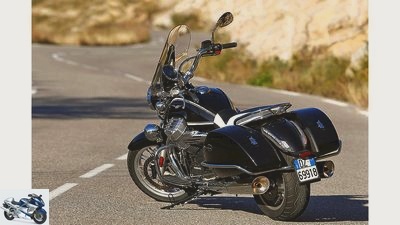
13/39
Moto Guzzi 850 T3 from 1976 and California 1400 from 2013.
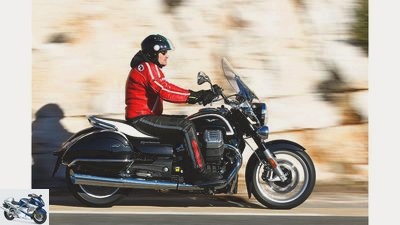
14/39
Moto Guzzi 850 T3 from 1976 and California 1400 from 2013.
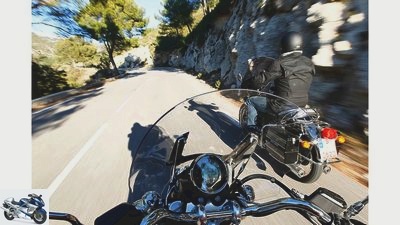
15/39
Moto Guzzi 850 T3 from 1976 and California 1400 from 2013.
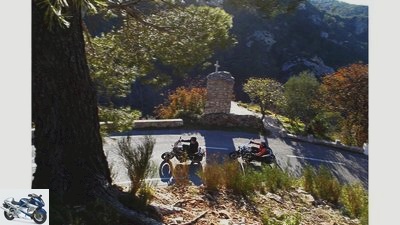
16/39
Moto Guzzi 850 T3 from 1976 and California 1400 from 2013.

17/39
Moto Guzzi 850 T3 from 1976 and California 1400 from 2013.
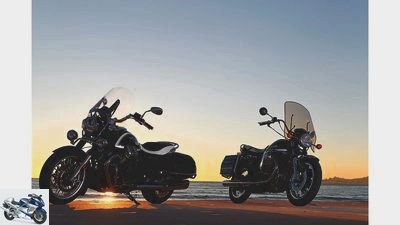
18/39
Moto Guzzi 850 T3 from 1976 and California 1400 from 2013.

19/39
Moto Guzzi 850 T3 from 1976 and California 1400 from 2013.
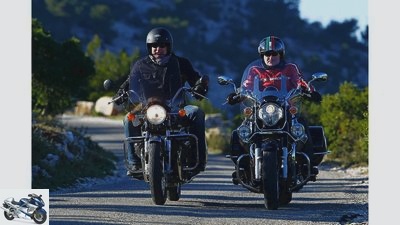
20/39
Moto Guzzi 850 T3 from 1976 and California 1400 from 2013.
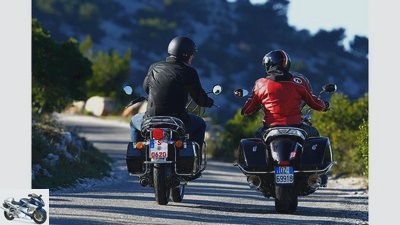
21/39
Moto Guzzi 850 T3 from 1976 and California 1400 from 2013.

22/39
Moto Guzzi 850 T3 from 1976 and California 1400 from 2013.
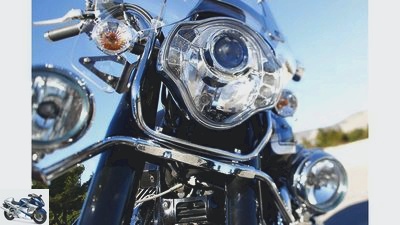
23/39
Moto Guzzi 850 T3 from 1976 and California 1400 from 2013.
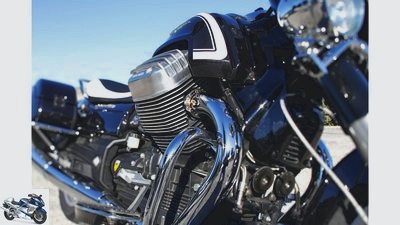
24/39
Moto Guzzi 850 T3 from 1976 and California 1400 from 2013.
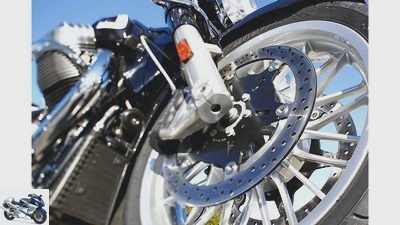
25/39
Moto Guzzi 850 T3 from 1976 and California 1400 from 2013.
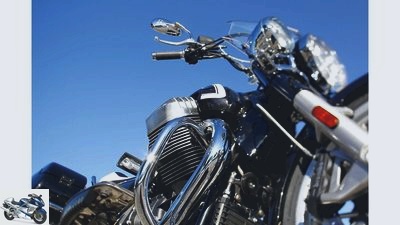
26/39
Moto Guzzi 850 T3 from 1976 and California 1400 from 2013.
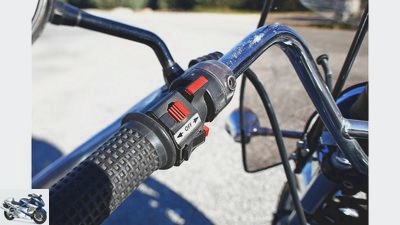
27/39
Moto Guzzi 850 T3 from 1976 and California 1400 from 2013.
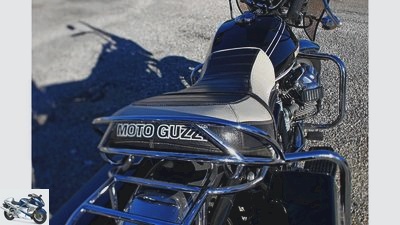
28/39
Moto Guzzi 850 T3 from 1976 and California 1400 from 2013.
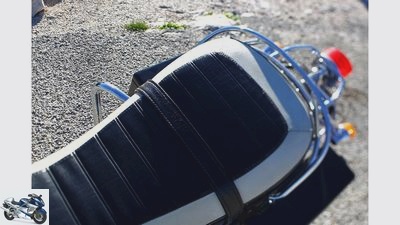
29/39
Moto Guzzi 850 T3 from 1976 and California 1400 from 2013.
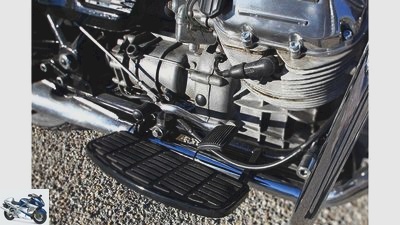
30/39
Moto Guzzi 850 T3 from 1976 and California 1400 from 2013.

31/39
Moto Guzzi 850 T3 from 1976 and California 1400 from 2013.
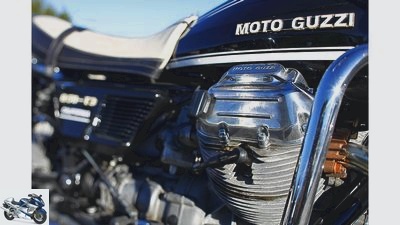
32/39
Moto Guzzi 850 T3 from 1976 and California 1400 from 2013.
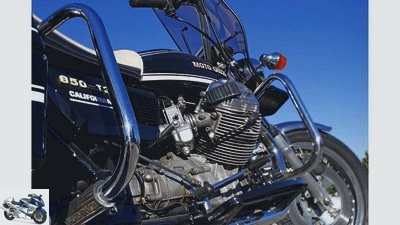
33/39
Moto Guzzi 850 T3 from 1976 and California 1400 from 2013.
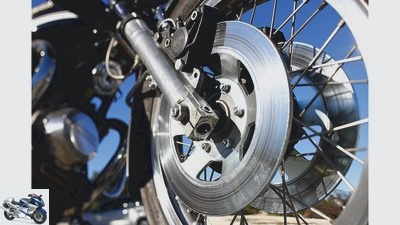
34/39
Moto Guzzi 850 T3 from 1976 and California 1400 from 2013.
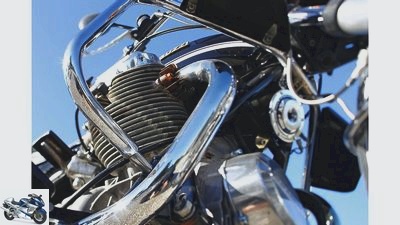
35/39
Moto Guzzi 850 T3 from 1976 and California 1400 from 2013.
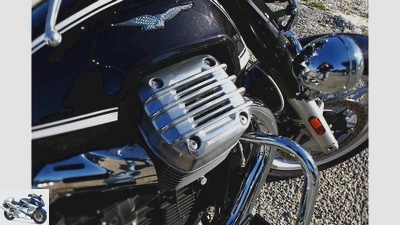
36/39
Moto Guzzi 850 T3 from 1976 and California 1400 from 2013.

37/39
Moto Guzzi 850 T3 from 1976 and California 1400 from 2013.
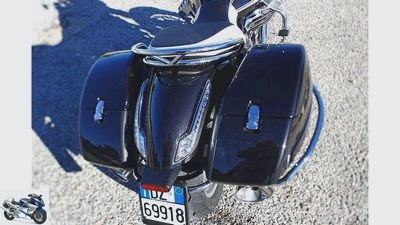
38/39
Moto Guzzi 850 T3 from 1976 and California 1400 from 2013.
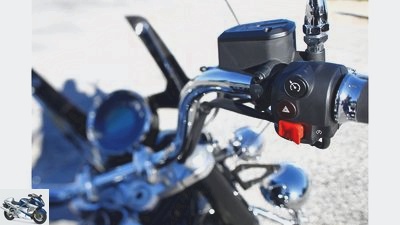
39/39
Moto Guzzi 850 T3 from 1976 and California 1400 from 2013.
Moto Guzzi California old versus new
California 1400 meets 850 T3 from 1976
The new Moto Guzzi California 1400 meets its ancestor, an 850 T3 from 1976. Both have the promising US west coast state in their name. What else is left, what is different?
The monsieur on the 1100 Guzzi Griso almost drives in front of the man in front of the car, not looking away anymore. And Madame, owner of the cafe, is amazed: “Les Belles”, the beautiful ones, is what she calls our classic black and white glossy machines. Stroll rating? Both exist M.oto Guzzi California with flying colors. Not only here on the Mediterranean, near Marseille, the second largest city in France. Our thoughts, however, take us to the Pacific. In 1970 the Police Department of Los Angeles, the second largest metropolis in the USA, put the V7 from Moto Guzzi with the still relatively young V2 engine into police service alongside Harleys.
Buy complete article
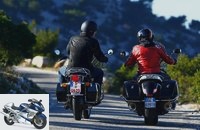
Moto Guzzi California old versus new
California 1400 meets 850 T3 from 1976
Moto Guzzi California. From 1971 onwards, it established the myth that continues to this day. The 850 T3 continued as the second Cali generation from 1975 – just like our 1976 copy from Limbacher Classic Motorcycles, which crackles to itself on the beach promenade. Today it is a sculpture in achromatic colors, a total work of art with chrome-plated fenders made of sheet steel, a rock in the surf of fast-moving times.
With a huge, tinted window, towering handlebars, cookie jars from plastic suitcases and a crash bar set in front of and around the cylinders. It is no coincidence that the lines, paintwork and equipment of the new California 1400 Touring cite its predecessor.
The now seventh California generation is keeping the legacy 37 years later. With traditional 90-degree V2 and cardan. Only with today’s Moto Guzzi California 1400, apart from the windshield, everything turns out a size bigger, more martial than with the ancestor. Right up to the chrome railing behind the much larger pillion seat in luxury yacht format.
Quotes from the day before yesterday poured into modern design language. These include cast rims in a spoke look and the cool custom rear with LED strips: taillights, brake lights and turn signals in one. Both Guzzis lean on their side stands by mutual agreement. Ready to board! It’s not that easy to get what is perhaps the longest side support in motorcycle history from the saddle of the 850. It’s a full five centimeters higher, but also a bit narrower and shorter than the seating furniture of the 1400s. Your side stand, Guzzi has learned, is easier to reach. In return, the new Moto Guzzi California 1400 is initially intimidating by its sheer size. It looks even more elongated than an actual 22 additional centimeters can explain.
266 kilos versus 345 kilos
Generation meeting at Guzzis. The Moto Guzzi California 1400 from 2013 in comparison with its ancestor, the 850 T3 from 1976.
The 850 weighs a mere 266 kilograms in full touring regalia, compared to a whopping 345 kilograms for the 1400. All-rounder against intentionally heavy luxury touring cruisers from Mandello del Lario. Iron age versus electronics age. Just paradoxical. Because the light old Moto Guzzi California clearly offers more metal! Indicator housing, lamp bell, mudguards, what sparkles here is also solid. In contrast, the 1400 shows a lot of chrome-plated and painted plastic in these (and other) components. Break in style? Both V2 engines have cooled down from chatting. On the 850 it is now necessary to find the choke between the left cylinder head and the frame, from there two trains lead to the starter jets. Precision mechanics meets fine motor skills.
Are both fuel taps open? Idle in there? The rod-shaped, faintly glowing control lights are fuzzy, the switches on the metal handlebar fittings are fiddly. The hands slide freely to the ends of the deer antler handlebar.
Begin! The starter hums, the flywheel rotates. Bodomm, bodomm, bodomm – the engine is still running with a little sparkling. It ignites in both cylinders poking out boldly from under the tank. Gasoline burns in the heart. The beach promenade trembles. The white needle in the Veglia tachometer with a green-blue background does the same. The valves tick happily, the rather slim exhausts answer every turn of the throttle with a dull bark. That turns on.
The Moto Guzzi California 1400s starts off in a straightforward manner. If you first deactivate the self-activating electronic immobilizer: press the button on the transponder. Finally, the biggest V2 in Guzzi’s factory history, the biggest ever from Europe, ignites. It is based on the previous 1200 models – with more bore and more effective combustion thanks to dual ignition. Because here, huge 104 pistons stamp up and down. But not far, the stroke is hardly larger than the 850: just 81.2 by 78 millimeters. In the old engine the alternator rotates directly on the front crankshaft stub, in the new one it rotates between the cylinders.
A lot has happened in the valve train: in the past, a central, lower camshaft rotated. It controlled only two valves per cylinder via tappets, bumpers and rocker arms. The new Moto Guzzi California has twice as many. One half-height camshaft per cylinder head actuates a valve quartet via short bumpers and rocker arms. In the new engine, only a central throttle valve, controlled purely electronically by ride-by-wire, ventilates both combustion chambers over long intake paths to promote torque.
Moto Guzzi California 1400 can do 185 things
Moto Guzzi 850 T3: The V2 has a venerable patina. Also in the form of the Dellorto 30 carburettor.
Sync problems? Pah, are from yesterday. Just like the 30 Dellorto carburetors. Today you inject, ignite digitally, detoxify your exhaust gas with a G-Kat, controlled by two lambda sensors. The 1400s of the Moto Guzzi California sounds throbbing bassy when stationary. The engine shakes, the handlebars tremble when idling, the glasses bounce on the nose. Wonderful. In the round cockpit instrument with a huge 15 centimeter diameter, the tachometer needle dances around the highly informative multifunctional display of the on-board computer.
Well-made technology, digital meets analog. The nowadays hydraulically operated single-plate dry clutch disengages softly. The first gear clicks in gently. The rocker switch on the Moto Guzzi California 1400 is much more ergonomic. Without taking your foot off the step, all of the following five gears can be engaged precisely using a heel trick. Rainer can only dream of that on the 850 Cali. To change gears, he has to push hard: the five-speed transmission knows treacherous intermediate idle runs. Or reports “neutral” if there is still a gear. Your cable clutch needs a trained forearm … A man’s or muesli motorcycle. Hearty, substantial.
Even the new Vau-Zwo tilts the whole motorcycle noticeably to the side when accelerating while idling – reaction torque of the crankshaft rotating transversely to the direction of travel. Once in motion, however, the ship’s diesel runs surprisingly smoothly. Vibration-elastic suspension of the engine in rubber elements makes it possible. New territory for Guzzi. Just like so much steam in a Cali. Measured 96 hp at 7160 tours. The powerful Moto Guzzi California 1400 would run 185 things if necessary. The 850, on the other hand, certified DAS MOTORRAD as early as 1975 that it was driving over 150 against a wall of air. And criticized the mighty train (“storm”) behind its barely curved pane. The 1400s can do better aerodynamics.
In the historic bumper engine, the “4000” at the zenith of the rev counter shows the comfort zone. Above this, the vibrations become coarser, the propulsion tougher on top. The revving pleasure of the new is missing. No matter. Because riding a motorcycle has rarely been more calming. Go 80 or 90 voluntarily, enjoy to the full. See everything, smell everything, feel everything. The goal is the way. The same applies on board the Moto Guzzi California 1400. The Maxi-V2 runs silky smooth up to 3500 tours. Only above does it pulsate gently. Annoying that the mechanical noises from the cardan shaft and gearbox dominate, not the exhaust sound. The old one sounds better when driving. She can do that too.
Straight ahead everything is more difficult on the 850 – clutch, shift, the stiff throttle grip. But the picture changes in tight bends and bends. The 850 lighter, which is 80 kilograms lighter, drives in circles around the Moto Guzzi California 1400 on its spaghetti tires. They are drawn on beautiful spoked wheels with Borrani high-shoulder rims. Narrow makes you manageable and needs less lean angle at the same speed. Grandma Cali is out of every roundabout, and there are a lot of them in the south of France, when the XXL granddaughter is right inside.
More feeling, less mass is the motto of the T3
Moto Guzzi California 1400: The largest V2 in Guzzi’s factory history is crowned by four valves and sophisticated slots in the cylinder covers.
Tribute to a 130 mm tire at the front and the 200 mm rear roller as well as the immense 1.68 meter wheelbase of the Moto Guzzi California 1400, the flat fork and the long trail. It’s amazing how neutral the hummingbird remains in the inclined position. Although the running boards touch down earlier than those of the 850s. “More feeling, less mass is the motto of the T3. Your chassis is really a fine one for the mid-1970s. Also descended from the undisguised Tourer T3. With the then brand new Tonti frame of the sports models.
Comfortable, but without undamped rocking, the classic spring elements (Konis at the back!) Follow the road relief. The oldtimer stays on course with great stability. This applies even more to the Moto Guzzi California 1400 with a mighty 46 fork and an incredibly long swing arm. And first of all their built-in safety: traction control and anti-lock braking system as standard. Neither was invented in 1975. A lot would have been given back then for such effective and finely adjustable radial four-piston stoppers. Moto Guzzi’s innovative integral brake system in the mid-70s is only little consolation.
The pedal of the 850 also operates the disc on the front left. It is clumsy to dose because the foot has to be raised. The remaining right single disc is toothless. Ergonomically, the Moto Guzzi California 1400 is more relaxing. With legs more stretched out and better contact with the tank, knees not as strangely high as on the 850. Functionally, the new one can do a lot better. Emotionally, the old woman has more charm, is more authentic, more intense. You have to think your way into it more, you can merge with it more. The 1400 Cali heralds a new era at Moto Guzzi, although the brand continues to have just one engine concept in terms of mono-engine. While the 850 was still a classic, even sporty touring motorcycle, the current 2013 touring cruiser attacks Harley-Davidson head-on. It’s a question of style.
Conclusion
Moto Guzzi 850 T3 from 1976 and California 1400 from 2013.
Only at first glance does the new look old. The Moto Guzzi California 850 was a classic touring motorcycle, handy, sporty-light and active. In contrast, the Moto Guzzi California 1400 is a heavy, technoid touring cruiser with a strong V2 and a lot of equipment.
Technical specifications
Moto Guzzi 850 T3 from 1976 and California 1400 from 2013.
Moto Guzzi California 1400
Air / oil-cooled 90-degree V-two-cylinder, 1380 cm3, bore x stroke 104.0 x 81.2 mm, four valves per cylinder, compression 10.5: 1, 71 kW (96 PS) at 6500 rpm, 120 Nm at 2750 rpm, injection, six-speed gearbox, cardan, double loop frame made of steel, telescopic fork 0 46 mm, two spring struts, 20.5 liter tank, three disc brakes (front four-piston calipers), ABS, traction control, tires 130/70 R 18 and 200/60 R 16, weight 345 kg, price 19600 euros
Moto Guzzi 850 T3
Air-cooled 90-degree V-two-cylinder, 844 cm3, bore x stroke 83.0 x 78.0 mm, two valves per cylinder, compression 10.2: 1, 43.4 kW (59 hp) at 6900 rpm, two Dellorto carburetor (0 30 mm), contact ignition, five-speed gearbox, cardan, double loop frame made of steel, telescopic fork, two spring struts, 22.5 liter tank, three disc brakes (front two-piston calipers), composite brake system, front / rear tires 4.10 H 18, weight 266 kg, price 9260 D-Mark plus additional costs (1975)
Related articles
-
Harley-Davidson Road King Classic against Moto Guzzi California 1400 Touring in the test
fact 50 photos fact 1/50 Moto Guzzi California 1400 Touring fact 2/50 Harley-Davidson Road King Classic versus Moto Guzzi California 1400 Touring in…
-
Test Moto Guzzi California 1400 Touring
Manufacturer Test: Moto Guzzi California 1400 Touring Italian touring cruiser When the leaves were brown and the sky was gray, The Mamas were dreaming…
-
Driving report Moto Guzzi California 1400 Custom
Manufacturer 39 photos fact 1/39 Generation meeting at Guzzis. The Moto Guzzi California 1400 from 2013 in comparison with its ancestor, the 850 T3 from…
-
Gargolov 50 photos Gargolov 1/50 The Yamaha XV 1900 A Midnight Star is the only one to brake without ABS, but with a composite system. Gargolov 2/50…
-
On the move: Moto Guzzi V7 Cafe Classic
fact On the move with the Moto Guzzi V7 Cafe Classic Yellow-green, air-cooled and spartan Content of The Guzzi eagle has offspring. Yellow-green,…
-
Moto Guzzi Audace, Triumph Thunderbird Commander and Victory Hammer S
Bilski 32 pictures Bilski 1/32 Strength meets glory and longing. It is the pure teaching of enjoying driving, taking off with …
-
On the move: BMW R 100 S, Honda CB 900 F Bol d’Or, Moto Guzzi Le Mans I.
fact On the move: big bikes from the 70s BMW R 100 S, Honda CB 900 F Bol d’Or, Moto Guzzi Le Mans I. Content of At the turn of the decade, MOTORRAD…
-
Moto Guzzi V7 Special and Moto Guzzi V7 II Special in comparison test
fact 38 pictures fact 1/38 Moto Guzzi V7 Special and Moto Guzzi V7 II Special in a comparison test. fact 2/38 … the Moto Guzzi V7 II Special scores with …
-
Retro motorcycles from Kawasaki, Moto Guzzi and Triumph put to the test
Gargolov 23 photos Gargolov 1/23 Chrome, sweet chrome. No-frills round clocks at Triumph. Gargolov 2/23 Comparative test of retro motorcycles – these…
-
Driving report Moto Guzzi MGS-01 Corsa
Gori Driving report Moto Guzzi MGS / 01 Corsa Adler learns to fly In autumn she was one of the stars of Intermot. The MGS / 01 study caused a sensation…